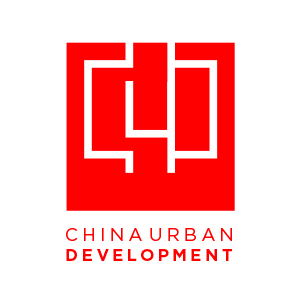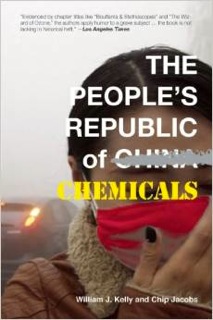Nothing threatens the stability of China’s economic miracle more than the hazardous levels of pollution generated by rapid development. The rise of the private automobile, unregulated toxic factories, and the widespread use of coal-burning as an energy source have all contributed to environmental degradation across China’s cities. While in the past, these issues were swept under the rug in favor of economic growth at all costs, the rise in living standards means that China’s leadership can no longer ignore the concerns of the people they serve.
China is now at a crucial turning point where economic goals must be balanced with considerations for the environment going forward. This is not an easy problem to tackle and the solution will require a global effort.
The new book The People’s Republic of Chemicals serves as an excellent starting point in understanding how China’s pollution problem got so out of hand in the first place and what can be done to stop it (or at least slow it down). The book’s co-authors, William Kelly and Chip Jacobs, are appropriate storytellers having together written the 2008 book Smogtown about the rise and fall of pollution in mid-century Los Angeles.
William took the time to answer some questions for us about their new book:
Adam Mayer (AM): As you observe in your previous book, Smogtown, Los Angeles has done a good job of cleaning up its air in a relatively short amount of time. Aside from the rise of use of catalytic converters for cars, how much does this have to do with the fact that L.A. is no longer a manufacturing powerhouse for the aerospace industry? Using L.A. as an example to learn from, how can China move away from manufacturing to services without sending shockwaves through its economy?
William Kelly (WK): In history, sixty years seems like a short time, but for those who lived it in Los Angeles it seemed like forever, especially for the roughly 10 percent of the population that suffers from asthma and other chronic respiratory diseases. And bear in mind the air in Los Angeles is still unhealthful, though much less so than even in the 1990s.
Aerospace really was a fairly minor source of air pollution in Los Angeles and its downsizing had more to do with the end of the Cold War, consolidation in the industry and the rise of Airbus and other competitors around the world. However, like virtually every other source of air pollution it was regulated and required to follow best practices and use the cleanest technology available. The fact is that around 1990, the LA area needed to cut emissions about 80 percent to meet health standards and to do that all sources had to be controlled. So the effort went far beyond the catalytic converter which was first required in the 1970s.
But without digressing, China can learn much from Los Angeles and California, but replacing manufacturing with services is not the answer. Instead, cleaning up the sources of energy in China is the key task that will bring the biggest environmental improvements, as well as much better control and treatment of waste byproducts from manufacturing that also pollute water, soil, and air.
The tragic thing we’re seeing now is that with the U.S. pushing the TransPacific Partnership trade agreement, we may replicate what happened environmentally in China in the 1990s in Vietnam, Malaysia, and other underdeveloped nations by helping to set up manufacturing that will be all coal powered. The coal plants in those nations already are being built in anticipation of the trade agreement.
AM: One of the more recent developments in China is the proliferation of citizen protests against new chemical factories. In your research, did you find this phenomenon to be widespread? How is the government (both local governments and the central government) reacting to these protests?
WK: The protests have been widespread, persistent, and often violent. The reason stems from fear of releases, particularly potentially catastrophic releases from chemical plants, but at the root is distrust of the public officials charged with regulating these plants.
Here’s a fact Americans might find hard to believe. In a nation with more than three times as many people as in the U.S., the Chinese equivalent to the U.S. Environmental Protection Agency has fewer people than work at the Natural Resources Defense Council, a few hundred. That’s in a nation that covers more land area than the U.S. too. Obviously that’s inadequate.
So as a result, the enforcement of standards largely falls on local and provincial government personnel, who are under the thumb of local and provincial Communist Party officials who are constantly wined and dined, if not controlled by industrialists. The common people know this, so they feel left to their own devices when these plants come to town.
The key to gaining trust here is for the national government to build up its capacity to enforce environmental laws and standards and for the national government to exert more control over provincial and local party officials by making their compensation and promotion contingent on environmental as well as economic performance.
AM: Perhaps most detrimental to China’s air quality is the widespread use of coal-burning as a power source. Given China’s growing demand for energy, and the cheap cost of coal as a resource, what are the necessary steps that the country needs to take to incentivize cleaner sources of energy? Is this already happening? If so, how?
WK: First, coal is the biggest cause of air pollution in China, particularly the terrible particle pollution we see in the pictures.
Solving the problem, therefore, is easy as ABC, anything but coal. Fortunately, China’s historic strength is in bringing technologies to scale, from the canals and roads of the dynastic days, to the great outpouring of digital devices we see today.
Now the nation is successfully turning to solar and wind power, where it’s become a leading nation both in manufacturing solar panels and wind turbines, and also deploying them in its grid. Indeed, China is the world’s biggest solar panel manufacturer.
Now, it’s beginning to do the same by turning to advanced batteries to store intermittent renewable power so it will be there at night and when the air is still. Coupled with the energy efficiency inherent in denser, urban living in small quarters we can hardly fathom in the U.S., China could be the next nation after Germany to get huge amounts of energy from renewable sources. In fact, it’s happening most energy analysts agree.
All that the Chinese have to do is follow Deng’s advice, to “be brave” and “walk with faster steps” when it comes to moving to renewable energy and to drop further development of coal.
AM: Looking ahead, do you think that urbanization will eventually lead to a better environment in China? In other words, once the new cities are built and the infrastructure is in place, will we look back on the last 3 decades as a small sacrifice paid for what could ultimately be a sustainable urban future with an intelligent grid, efficient public transit and green buildings? Or has the pace and scale of urbanization taken a toll on the environment that can never be rectified?
WK: When it comes to what China is doing with public transit, housing, and amenities for its people, one could argue it puts the U.S. to shame. In many ways, we have much to learn.
Clearly, even the casual visitor can see China is making a lot of the right moves on transportation and urbanization, moves that are setting it on a path when it’s fully developed toward much lower emissions per capita than in the U.S.
The danger is, however, that continuing to rely on coal to build out its cities will do irreparable harm to the world’s atmosphere by pushing up carbon levels to the point that triggers runaway global warming. The Chinese leadership ultimately is coming to grips with this, but needs to embark on a crash program to transition to clean energy.
Given their great communitarian tradition and amazing technical ingenuity—remember they had vastly superior technology to Europe even at the time of Marco Polo—the Chinese are fully capable of doing this, in fact leading the world on it. The ability is there, all they need to do is muster the resolve.
Many thanks to William Kelly for taking the time to answer these questions for us. Please be sure to read their new book The People’s Republic of Chemicals.



by Adam Mayer
2014 Ended With A Shaft of Light After Years of Shafting the Earth | - […] BOOK * Bill’s Q&A with the China Urban Development […]